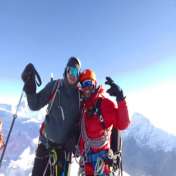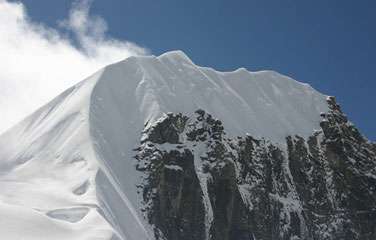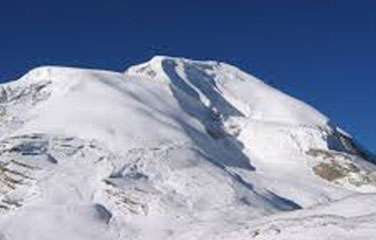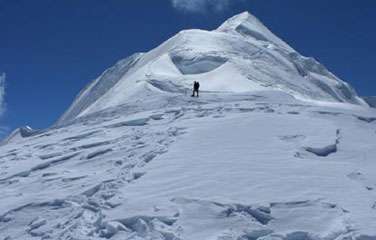Useful Information
Mera Peak Climbing route
Mera Peak Climbing package is precisely designed to let you explore not a very crowded part of the Khumbu region at a steady pace. A thrilling flight from Kathmandu will take you to Lukla, the starting point of the trek. From here, you will head south of the Lukla towards the gorgeous Hinku Valley and return via Zatra La Pass. This is the opposite route of what usually trekkers go through. During the trek, you will pass by lovely mountain villages and dense forests. From Mera Peak Base Camp, you ascend to the Mera High Camp and reach the summit.
Mera Peak Climbing difficulty & Altitude Sickness
Mera Peak Climbing 20 Days is no doubt a difficult climbing journey in the Himalayas, however the peak does not involve many technical sections. Therefore, climbing Mera Peak is an ideal option for those with minimal climbing skills. The elevation of the peak makes the climbing challenging. Likewise, you will also be crossing Zatrwa La Pass, which also demands good physical fitness. You have to be in good shape and health to go on Mera Peak Climbing.
The high altitude during the Mera Peak Climbing can trigger altitude sickness or acute mountain sickness. This generally happens if your body is not properly acclimatized with the increased altitude. Therefore, we have made our Mera Peak Climbing itinerary, including ample rest days and constant gain in the elevation. Keeping yourself hydrated is very important to avoid AMS.
Best time to go on Mera Peak Climbing
March to April and September to November is the best time to go on Mera Peak Climbing. These are the months that have the most stable weather and moderate climate, which is perfect for climbing mountains in the Himalayas. Likewise, you will get to see a range of flora and vegetation on the trail during this time of the year. December to February and May to July is not a good time to embark on this journey.
Accommodation & Meals
You stay overnight in lodges during Mera Peak Climbing. We will reserve the best possible lodge for you. The lodge here offers quite a basic facility. The rooms are twin-shared with usually common washrooms. There are not many services available in the lodge, and as the elevation will increase, the facilities will also get limited & expensive. While climbing, you stay overnight in tents, which is carried by the crew. All the necessities are also carried along to make sure you are having comfortable stay on base camp and above.
Three meals a day are provided during the trek. The meals will be served as per the menu of the lodge. The best thing is that this part of the Himalayan trail offers quite a range of food options. You can get rice, curries, porridge, pudding, soups, momo, noodles, pasta, bread, meat, egg, etc. There are also numerous teashops throughout the trail, so you can buy snacks as well, however the price may be more expensive than the city.
Communication & Electricity
Both hydroelectricity and solar electricity can be seen in the villages. Facilities like hot showers and charging may or may not be available in some lodges. Also, you might have to pay a few extra bucks to use these services. Therefore, carrying a couple of extra batteries will always come handy. Likewise, communication and internet availability depends on altitude. The higher you go, the weaker network gets. For safety and to report at the base camp and city office, your team leader will be equipped with a satellite phone.
Travel Insurance
Travel insurance is mandatory to have to join Mera Peak Climbing 20 Days. The unseen circumstance and unpredictable weather in the Himalayas can be dangerous. Having reliable travel insurance will help you get medical and hospital facilities on time, and in the worst case, can save your life through air evacuation. Do know that you have to take out travel insurance in your own country as Nepal does not allow travel insurance to foreigners.
Guide & Porter
A successful climb in the Himalayas does depend on the team leader and the carriers who accompany you throughout the journey. We provide some of the best and active climbers during climbing. You will be accompanied by mountaineers who have climbed Mera Peak numerous times before and are well known with the trail. They are well trained and friendly.
Environmental Contribution
Climbing can harm the environment if not done with proper measures. We Adventure Small World uses several measures during our trips to make sure our venture is not harming nature. We run eco-friendly and sustainable treks and climbing. All our equipment is eco-friendly, and we also encourage local business by promoting them. Moreover, we also run a small organization that funds education for children from marginal mountain families.






